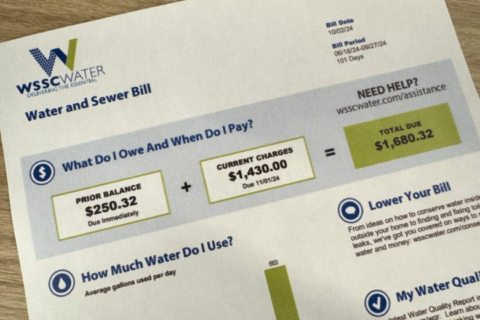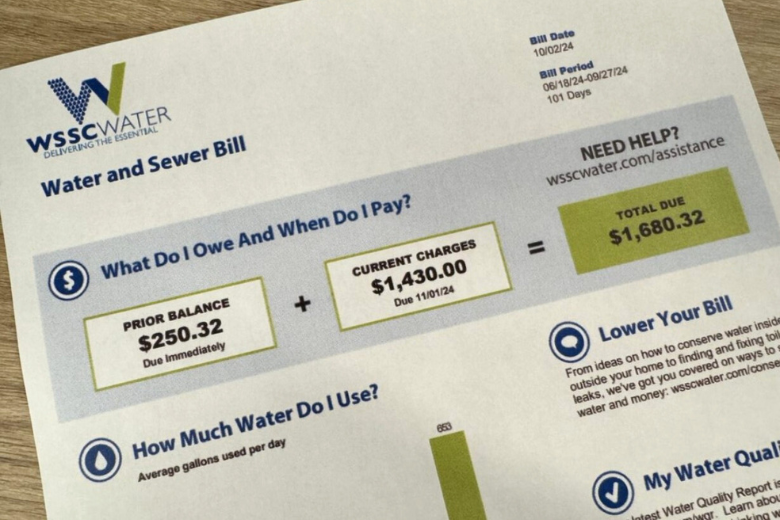
For Nicole Hines of Germantown, Maryland, it was quite a shock when she called WSSC Water to check her bill and an automated voice read a total of nearly $1,700 for a three-month period.
“I’m listening to the recording, I’m thinking, ‘surely there’s a mistake,’” Hines told WTOP. “‘This has to be a mistake.'”
She’s since called two plumbers who’ve looked for any leaks in her home, which, according to her bill, allowed 66,000 gallons of water to escape. Those plumbers replaced the inner workings of her toilets just in case, but didn’t find a leak they believed could have led to the spike in her bill.
WSSC Water has offered her a one-time bill adjustment, since the spike in the bill was significantly different from previous bills.
While Hines said plumbers told her they didn’t find anything leaking, WSSC Water’s Lyn Riggins said all signs point to a common culprit.
“This customer’s situation was a classic example of what we believe to be a toilet leak,” she said. “She had very consistent usage — somewhere around 80 to 100 gallons of water a day — and then, when she had this leak, it increased to over 650 gallons a day. And when you have a toilet leak, that is what can happen.”
Toilet leaks can lead to a rise in water usage as high as thousands of gallons a day.
“You can end up with a bill up to $10,000 because of a single toilet leak,” Riggins said.
Faulty flappers, a stuck fill valve or failures in other parts of the toilet could be to blame, according to Riggins.
“If your flapper loses its seal, then water is constantly running through that toilet, and you’re not seeing it, but you’re constantly using it,” Riggins said.
She said while people remember to check their smoke alarm batteries twice a year, or check the tires or brake fluid in their cars, they don’t typically check their toilets for leaks.
“You need to check those parts because they’re sitting in water all of the time doing their job and they are going to wear out,” Riggins said.
She said WSSC Water offers dye tablets that can be dropped into the tank. If the dye makes it into the toilet bowl without flushing for 15 minutes, there may be a leak. Riggins recommended conducting that test every six months.
“It’s very simple to check for toilet leaks, and it’s a great idea to do it once or even twice a year, because as soon as you know you have a leak, you can get it fixed and save on your bill,” Riggins said.
Another common cause of toilet leaks is “lift wires” that are corroded or bent and stop the flapper from closing correctly.
Water loss that skyrockets your bill payments may also be caused by an overflow leak, which occurs when the water in the tank is draining into the overflow pipe. In that case, the ballcock valve needs adjustment or replacing, according to the utility company.
Leaks elsewhere could also be to blame, such as water dripping from faucets.
In Hines’ case, she told WTOP she hopes the problem is fixed, but the situation still leaves her a bit anxious.
“It makes me paranoid about using water, because I’m like, ‘OK, if I’m washing dishes and I’m washing clothes, how much am I going to be charged for this?’” she said.
Riggins said Hines qualified for a high bill adjustment, which involves a customer sending in several meter readings to show the usage has returned to typical levels after a leak is fixed.
“We will look at her usage from a comparable time and remove half of that high bill … as a courtesy for the customer, because we understand this happens,” Riggins said.
Get breaking news and daily headlines delivered to your email inbox by signing up here.
© 2024 WTOP. All Rights Reserved. This website is not intended for users located within the European Economic Area.









